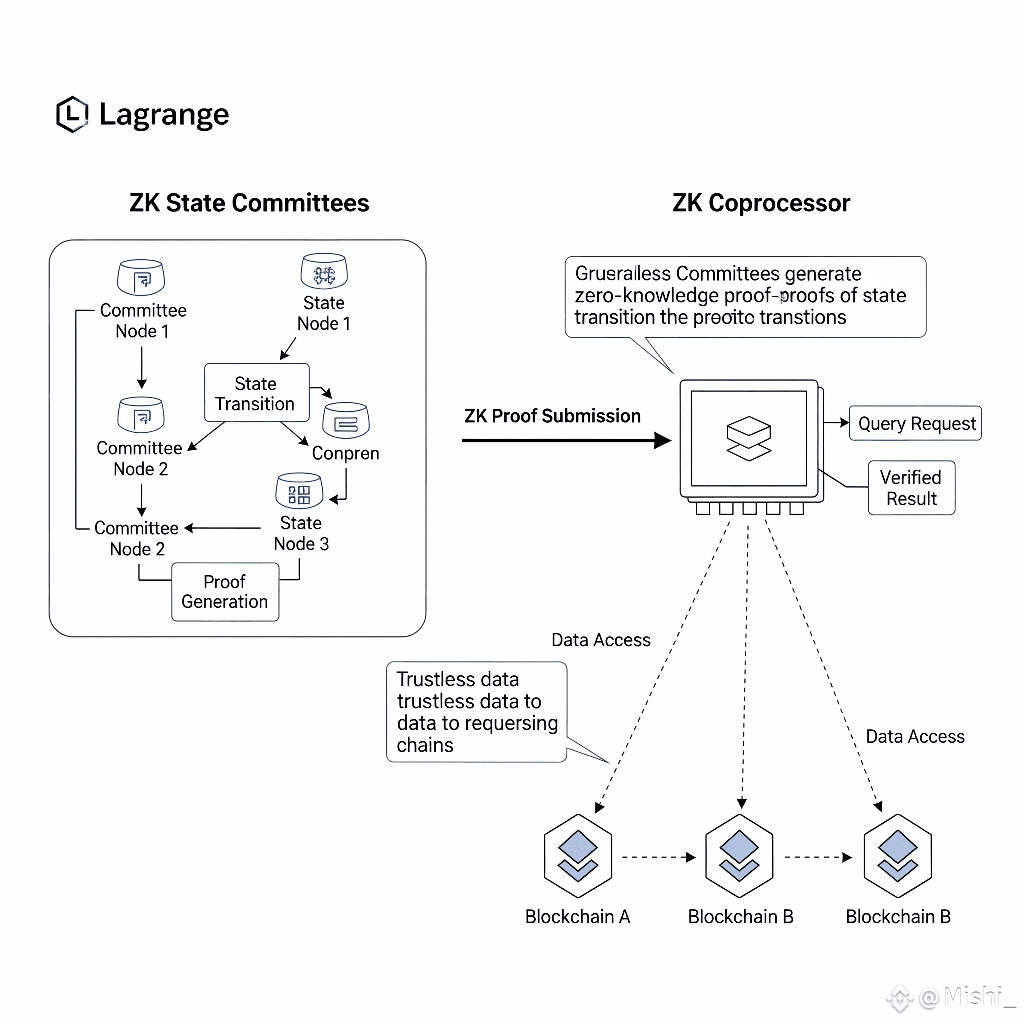multi-chain world, the importance of trustless, scalable, and verifiable cross-chain communication grows stronger by the day. That’s where Lagrange, a pioneering protocol, is redefining the boundaries of zero-knowledge (ZK) interoperability through cutting-edge technology.
🧠 What is Lagrange?
Lagrange is a modular ZK coprocessor that acts as a data availability and computation layer across multiple blockchain networks. It’s purpose-built for enabling efficient querying and proving of historical data using zero-knowledge proofs, solving one of the most critical pain points in decentralized infrastructure: verifiable and efficient access to state data across chains.
With $LA as its native token, Lagrange is more than a messaging bridge — it’s an on-chain analytics and verification engine for a decentralized future.
🧬 Core Technology Behind Lagrange
Lagrange employs advanced mathematical frameworks and cryptographic primitives to build ZK State Committees and ZK Coprocessors:
ZK State Committees: These are lightweight SNARKs that commit to a blockchain’s state. It allows users to query any historical state (balances, ownership, contract state, etc.) without needing full node storage or trusting a third party.
ZK Coprocessor: A modular system where developers can run complex computations and queries over committed data and generate ZK proofs for their results.
This approach allows for low-latency, trustless interoperability, ideal for real-world use cases like MEV resistance, DeFi liquidity aggregation, on-chain gaming, and much more.
🌐 Why Lagrange Matters in the Interchain Economy
In today’s fragmented blockchain landscape, data availability and verifiability are often centralized or inefficient. Traditional oracles or bridges are prone to failure, latency, and economic exploits.
With Lagrange:
✅ Developers can access trustless cross-chain proofs with minimal gas cost.
✅ Applications like rollups, bridges, and indexers become more secure and transparent.
✅ Protocols can query Ethereum, L2s, and non-EVM chains from a single unified interface.
This makes @Lagrange Official a key building block for dApps that demand real-time, verifiable data from any chain.
🔗 Real-World Use Cases
Here are some examples of how Lagrange is changing the game:
DeFi Aggregators: Use Lagrange to verify token balances or staking positions across L2s before executing transactions.
On-chain Games: Fetch player state from different chains without compromising trust.
MEV-Resistant Rollups: Use Lagrange’s ZK data layer to identify sandwich attacks across chains.
DAOs & Governance: Access historical voter records or cross-chain delegate balances for governance proposals.
📈 Powering the Lagrange Ecosystem with $LA
The $LA token is the backbone of the Lagrange ecosystem. It facilitates:
Staking to participate in ZK State Committees.
Payment for query execution and proof generation.
Governance over key protocol parameters and upgrades.
As adoption grows, demand for $LA will scale with cross-chain data query usage and ecosystem integration — positioning it as a valuable asset in the multi-chain economy.
🚀 Final Thoughts
Lagrange is building a critical layer of ZK-powered infrastructure that enables verifiable computation and trustless interoperability across blockchains. With the growing importance of modular architectures and ZK rollups, @lagrangedev stands out as a visionary project that provides foundational infrastructure for the next generation of Web3 applications.
Join the movement. Explore Lagrange. And discover the real power of decentralized ZK coprocessing.
@Lagrange Official | #lagrange #Lagrange | $LA


